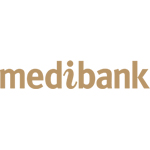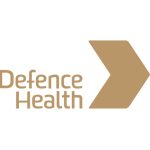Look after your sight with keratoconus treatment in Brisbane
Discover how our personalised treatments for keratoconus aim to give you vision you can rely on
Be the master of your destiny
Learn how your keratoconus can be treated by one of our leading eye specialists
Secure your sight
With corneal cross-linking, we aim to stabilise vision. Some patients experience visual improvement from cross-linking or take the route of correcting their vision after treatment with INTACS.
Take control
Your doctor will discuss all possible treatment options with you, and be able to recommend the best one for you and your eyes.
Rediscover your strengths
Keratoconus doesn’t have to mean giving up all the activities you enjoy. Our doctors can help manage your condition with compassion and understanding, to ensure you are still getting the most out of your life.
Empower yourself
Not understanding your condition can be a scary thing. Our doctors can help you not only understand more about keratoconus, but also how to manage this condition.
Secure your sight
Corneal cross-linking is able to stabilise vision in many people, and some patients even experience e visual improvement. Many of our patients then take the opportunity to improve their vision further with INTACS.
Take control
Your doctor will discuss all possible treatment options with you, and be able to recommend the best one for you and your eyes.
Rediscover your strengths
Keratoconus doesn’t have to mean giving up all the activities you enjoy. Our doctors can help manage your condition with compassion and understanding, to ensure you are still getting the most out of your life.
Empower yourself
Not understanding your condition can be a scary thing. Our doctors can help you not only understand more about keratoconus but also how to manage this condition.
Discover how keratoconus treatment will have you feeling better in no time
In this video, Dr. Nick Toalster explains how keratoconus treatment brings relief to patients
Take the first step to stop keratoconus in its tracks
Book a consultation, and one of our Brisbane eye experts will guide you towards the right treatment for your keratoconus so you can take back control of your life
Useful information about keratoconus treatment
Corneal cross-linking suitability criteria
Corneal cross-linking (CXL) is recommended for patients whose corneal scans show evidence of worsening keratoconus, or those who might be at especially high risk of worsening keratoconus. Progression of keratoconus usually stops by the mid-30s, so is not normally required for older patients.
How corneal cross-linking works
Healthy corneas are able to retain their shape due to strong bonds (cross-linkage) between collagen fibers. When keratoconus occurs, these cross links, or support beams, break down, weakening the cornea and causing the tissue to bulge outwards. Corneal cross-linking uses riboflavin eye drops and ultraviolet light to increase the amount and strength of the collagen bonds, therefore strengthening the cornea and preventing further loss of vision.
Advantages and disadvantages
Advantages
- Improved vision: Up to 81% of patients who undergo CXL will be able to see more clearly after treatment.1Miamikeratoconus.com. 2021. What is Cross Linking (CXL)?. [online] Available at: <https://www.miamikeratoconus.com/site/what-is-cross-linking-cxl.htm> [Accessed 24 June 2021].
- Minimally invasive: As opposed to a corneal transplant, which requires a surgical procedure, CXL is minimally invasive.
- Long-lasting results: Studies have concluded that the results of CXL can last for years and that the strengthening effect may be permanent.2Years, C., 2021. CXL Eyes Stable After 10 Years. [online] American Academy of Ophthalmology. Available at: <https://www.aao.org/eyenet/article/cxl-eyes-stable-after-10-years> [Accessed 24 June 2021].
- Shorter recovery: Recovery following a corneal transplant can often be a lengthy process. In contrast, CXL allows patients to return to normal activities within days.
Disadvantages
In general, cross-linking is very safe,3Clark Chang, M., 2021. Your Top 12 Crosslinking Questions—Answered!. [online] Reviewofoptometry.com. Available at: <https://www.reviewofoptometry.com/article/your-top-12-crosslinking-questionsanswered#footnotes> [Accessed 24 June 2021].but you should allow time for your eye to heal and problems do occasionally occur. About 3% of patients will experience some loss of vision in the treated eye as a result of haze, infection, or other complications.4Hull University Teaching Hospitals NHS Trust. 2021. Corneal Collagen Crosslinking (CXL) for Keratoconus | Hull University Teaching Hospitals NHS Trust. [online] Available at: <https://www.hey.nhs.uk/patient-leaflet/corneal-collagen-crosslinking-cxl-for-keratoconus/> [Accessed 24 June 2021].
In most cases, we can reverse any visual loss with a corneal transplant. Without cross-linking treatment, at least 20% of all patients with keratoconus will eventually require a corneal transplant.5Hull University Teaching Hospitals NHS Trust. 2021. Corneal Collagen Crosslinking (CXL) for Keratoconus | Hull University Teaching Hospitals NHS Trust. [online] Available at: <https://www.hey.nhs.uk/patient-leaflet/corneal-collagen-crosslinking-cxl-for-keratoconus/> [Accessed 24 June 2021].
Corneal cross-linking risks
In general, CXL is very safe,6Hull University Teaching Hospitals NHS Trust. 2021. Corneal Collagen Crosslinking (CXL) for Keratoconus | Hull University Teaching Hospitals NHS Trust. [online] Available at: <https://www.hey.nhs.uk/patient-leaflet/corneal-collagen-crosslinking-cxl-for-keratoconus/> [Accessed 24 June 2021].but like all operations, your eye needs time to heal, and problems do occasionally occur.
About 3% of patients will lose some vision in the treated eye as a result of haze, scarring, corneal surface shape irregularity, or infection.7Hull University Teaching Hospitals NHS Trust. 2021. Corneal Collagen Crosslinking (CXL) for Keratoconus | Hull University Teaching Hospitals NHS Trust. [online] Available at: <https://www.hey.nhs.uk/patient-leaflet/corneal-collagen-crosslinking-cxl-for-keratoconus/> [Accessed 24 June 2021]. In most cases, this visual loss is potentially reversible with a corneal transplant.
Without CXL treatment, at least 20% of all patients with keratoconus will eventually require a corneal transplant. The risk of transplantation for patients with documented disease progression is probably higher.8Hull University Teaching Hospitals NHS Trust. 2021. Corneal Collagen Crosslinking (CXL) for Keratoconus | Hull University Teaching Hospitals NHS Trust. [online] Available at: <https://www.hey.nhs.uk/patient-leaflet/corneal-collagen-crosslinking-cxl-for-keratoconus/> [Accessed 24 June 2021].
Options and alternatives
We can combine cross-linking with intracorneal or intrastromal rings to flatten the keratoconus bulge even more. The rings stabilise keratoconus which prevents it from getting worse.
Corneal cross-linking steps
Step 1: We numb the surface of the eye, so you feel no pain.
Step 2: We remove the epithelial cell layer from the central part of the cornea, and apply the riboflavin eye drops.
Step 3: Once the eye drops have penetrated the cornea, we focus the UV light onto the central area of the cornea for 10 minutes.
Step 4: Finally, a bandage soft contact lens is applied. The contact lens is worn for up to 2 weeks until the surface epithelial cell layer has regrown.
Corneal cross-linking results
Cross-linking is currently the only available treatment that appears to stop the worsening of keratoconus.9WebMD. 2021. What Is Corneal Cross-Linking?. [online] Available at: <https://www.webmd.com/eye-health/corneal-cross-linking-for-keratoconus> [Accessed 24 June 2021].
Clinical trials based on outcomes one year after cross-linking show success in the halting of keratoconus in more than 90% of treated eyes, with more than 45% of eyes also gaining an improvement in corneal shape.10Aldo Caporossi, Cosimo Mazzotta, Stefano Baiocchi, Tomaso Caporossi, Rosario Denaro, “Age-Related Long-Term Functional Results after Riboflavin UV A Corneal Cross-Linking”, Journal of Ophthalmology, vol. 2011, Article ID 608041, 6 pages, 2011. https://doi.org/10.1155/2011/608041 A separate study over five years showed a similar success rate in halting the progress of keratoconus.
Visual improvement after treatment occurs in approximately 50% of cases. However, after treatment, you will still need to wear spectacles or contact lenses.11Christopher Kent, S., 2021. Cross-Linking: Asking the Tough Questions. [online] Reviewofophthalmology.com. Available at: <https://www.reviewofophthalmology.com/article/cross-linking-asking-the-tough-questions#:~:text=so%2C%20for%20whom%3F-,Dr.,some%20flattening%20after%20cross%2Dlinking.> [Accessed 24 June 2021].
How to get help at our Brisbane eye clinic
Regain control in 3 easy steps

Step 1 – Reach Out
Give us a call on: 3725 0222 and we’ll guide you towards an initial appointment.

Step 2 – We’ll Meet
During your initial appointment, I will take a detailed history and examination to make an accurate assessment of the issue at hand.

Step 3 – Your Vision Restored
We will treat you at one of our state-of-the-art Brisbane eye clinic facilities, giving you the optimism and confidence to live life at ease.
As seen on TV
OKKO aims to provide life-changing vision transformation to patients
Insurers
We’ve got you covered, OKKO is pleased to work with all the insurers below:
Links to authoritative resources on keratoconus treatment
Our Brisbane eye specialists
We are dedicated to providing you with the best possible eye health and vision outcomes

Dr. Matthew Russell, MBChB, FRANZCO
Brisbane Eye Surgeon
I am a specialist ophthalmic microsurgeon, internationally trained retinal surgeon, medical retinal diseases specialist, and cataract surgeon. With a career that spans over 15 years, I have mastered the ability to achieve precise results with the aim of helping patients regain their confidence and youthful energy.

Dr Judy Ku, MBChB, FRANZCO
Specialist ophthalmic surgeon
I am a specialist in glaucoma, cornea & external diseases and cataract surgery. I am passionate about assisting my patients to achieve their full visual potential. I feel extremely privileged to have the opportunity to restore sight and to improve people’s quality of life.
















